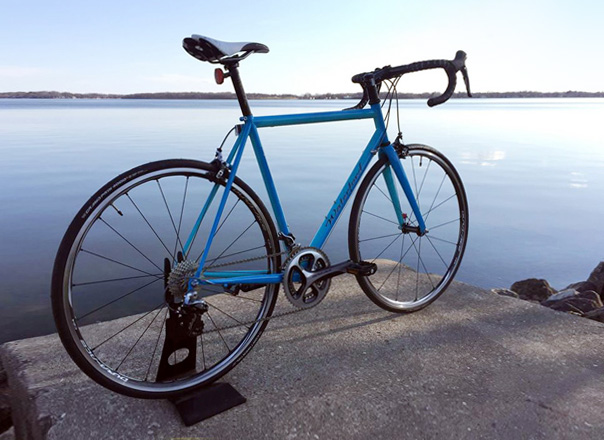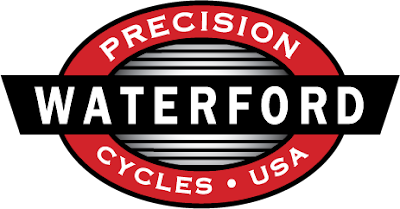Sheldon Brown dubbed the quarter-century or so following World War II as the "Dark Ages" of US Cycling. Few adults cycled and nearly all of them were clustered around a few cities. So, perhaps not surprisingly, high-quality cycling gear was difficult to come by, as nearly all American bicycle manufacturing consisted of bikes for kids. Those tiny number of shops and mail-order companies that offered high-end parts and bikes, as often as not, ordered them for their customers from Europe or a few companies in the US.
As for the bikes: Some frame builders, like Dick Power of Queens, New York (who, interestingly, sponsored and mentored female riders) and George Olemenchuk of Detroit, turned out some well-crafted machines that rode well. But they made small numbers of frames that rarely, if ever, were ridden by cyclists beyond their immediate environs. Quite possibly the only nationally-availabe, US-made, world-class (Did I use enough modifying phrases?) bike was Schwinn's aptly-named Paramount. But you couldn't buy one of the showroom floor--unless, of course, your local Schwinn dealer stocked one (and if they did, the probably stocked only one) and it happened to be the right size for you.
Then came the 1970s "Bike Boom." High-quality racing and touring bikes from England, France, Italy and Japan appeared even in small-town bike shops. Some might debate that they had ride qualities that the Paramount lacked, but few argued that the workmanship of those imported bikes was better. But they--especially the Japanese bikes--offered much better value for the money, as the Paramount's price doubled within three years.
More to the point, though, the newly-available bikes made Paramounts, as nice as the were, seem stodgy. And, according to people in the industry, the Paramount's production facilities and methods were dated. Moreover, by the end of the decade, a number of American custom frame builders like Albert Eisentraut and Bruce Gordon were turning out bikes that rivaled those of their overseas counterparts.
So, in 1980 Paramount production moved to a new facility in Waterloo, Wisconsin. (Not long after, much of Schwinn's other production shifted from Chicago to Mississippi.) These changes occurred around the same time Schwinn ownership and management shifted to a new generation. But the company failed to keep up with changes in the industry--they were late to the mountain bike and very late to the BMX game--and declared bankruptcy for the first time in 1991.
In the wake of those developments, two members of that new management generation--Richard Schwinn and Marc Muller--took over the Paramount facility and started a company familiar to a generation of American bike enthusiasts: Waterford. It focused on building, essentially, updated custom versions of the Paramount: hand-crafted lugged frames from Reynolds, Tange or other high-quality alloy steel tubing. Later, they added another line of bikes--Gunnar--with TIG-welded steel frames that weren't available in custom sizes or colors.
 |
| A late-model Waterford |
Last month, Schwinn and Muller announced that Waterford/Gunnar was closing up shop. The reason, they said is that they and several other key employees are retiring. They fulfilled their remaining orders and sold the building. This Saturday, the 24th, there will be a "farewell" ride beginning at the factory, where there will be an "open house." On that day, an online auction will begin. Running until 10 July, there won't be many frames or forks available for sale. But it might be a good source for current or aspiring builders or manufacturers or a collector with "an interest in something from the legendary Waterford factory," according to the company.










